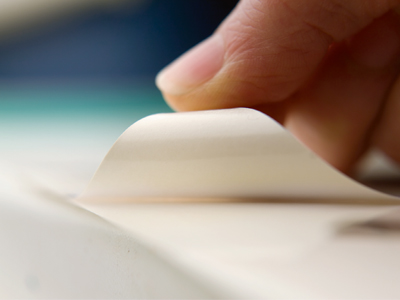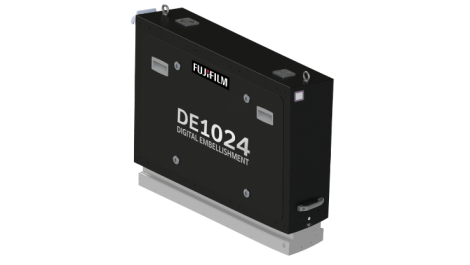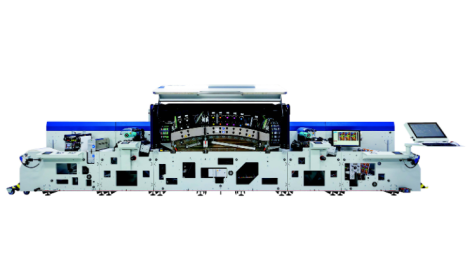When looking at printed labels or packaging, it is the print quality and finishing that grabs most of the attention. The substrate tends to be a bit of an afterthought for the end user, but for the producer it is critical. By Sean Smyth.
The substrate has to provide the necessary material properties for the pack and the surface has to be optimised for the particular print process that will be used. For flexo and litho printing, the surfaces have been developed over many years to provide optimal performance with the ink types in use and converters have built up their experiences and know how to optimise the results. Then they go into digital and the whole situation changes. Adhesion, cracking and durability, colour gamut, dot gain, smoothness, barcode legibility, fastness, odour and taint, and varnishing all need to be checked and understood.
Digital inks and toners are different to flexo and litho, as is the method of application. Inkjet fires fine drops of liquid ink onto the surface. These can spread and absorb into porous substrates before drying; with UV there may be instant pinning to fix the droplet while there is a lot of clever chemistry on water-based inks to achieve the same result. Powder toners are fused into the surface through heat and pressure, making temperature-sensitive substrates unsuitable. The mechanism of Indigo printing applies a thin layer of semi-cured ink to the surface under pressure and at an elevated temperature. The result is excellent print quality, but not great adhesion to the substrate particularly on non-absorbent materials. HP has recognised this and provides priming units on its high performance presses for labels and packaging. These use a flexo unit to lay down a thin priming layer immediately before printing and this hugely improves the printability and performance.
Many ink companies also provide primers for particular applications. HP recommends Michelman, a Cincinnati-headquartered speciality chemical company that develops materials that enhance the surface qualities of coatings and inks with primers and coatings. It started with corrugated and supplies into flexible packaging, launching the range of DigiPrime materials for digital substrates. DigiPrime is a line of water-based certified primers that improve ink receptivity, rub resistance and image quality on most types of paper, plastic, metallic and filmic substrates. Before that, it developed coatings for Indigo presses to improve adhesion and printability on paper and filmic material.
At Labelexpo, Michelman will introduce DigiPrime 680, a primer formulated specifically for use in the inline priming unit of the HP Indigo WS6000 series of label presses. It is claimed to be particularly effective for flexible packaging, improving receptivity on most types of film, while exhibiting good lamination bond strength including shrink sleeves. DigiPrime 050 is for use on the HP 20000 for flexibles where it enhances adhesive bond strength between film layers and can be used in conventional adhesive laminated structures. DigiPrime 060 is formulated for the 30000 sheetfed carton press, enhancing ink adhesion that does not interfere with converting operations including erection of the carton, gluing, date coding and bar coding. The latest high performance Indigo presses for labels and packaging have in-line priming stations, or substrates may be pre-primed.
Lubrizol offers a range of receptive treatments for filmic and paper substrates for digital labels and packaging, based on its wide range of in-house polymer synthesis capabilities, under the PrintRite trade name. In the area of films, these primers offer excellent adhesion to PP, PET and PE, as well as improving print definition, reducing ink usage and improving dying.

Inline priming unit on the HP Indigo WS6800.
HP has over 3000 substrates certified for use with its technology, some needing priming while others are pre-treated. The RIT (the Rochester Institute of Technology) operates the certification programme for substrate manufacturers and suppliers, and Indigo press owners to evaluate substrate compatibility. The certification procedure incorporates several stages checking performance in the press, specifically looking at runnability; ink transfer quality in highlights, thin lines, heavy images and image edge integrity; ink adhesion, flaking and abrasion resistance; the blanket compatibility and temperature operating window.
One of the first cartonboard suppliers is Mayr-Melnhof Karton, which is working with several digital press developers and sells its MM Digicarton grades. MMK has conducted tests for sheet and webfed print and has Indigo certification for white line chipboard from the Frohnleiten mill and GC2 quality folding boxboard MM Digicarton from Baiersbronn. It is planning to broaden the range.
For labels, Avery Dennison is a market leader in self-adhesive stocks providing materials optimised for digital printing that avoid the need for priming on site. There are specific products for Xeikon and EFI Jetrion, and it offers more than 130 HP-certified products. As digital press installations have grown, it makes sense for substrate suppliers to provide solutions for particular applications, and Avery Dennison has done this for wine labels. The TC7214 Indigo Topcoat has been segmented with some 13 pre-optimised face stocks in a range of widths providing paper, textured, film and foil now available.
The Indigo Topcoat range of self-adhesive films and papers is designed for HP Indigo, and importantly, Avery Dennison provides advice on substrate selection for digital printing, a service also provided by UPM Raflatac, Antalis and Mactac amongst others. Mactac has Indigo certified stocks, together with ranges for Primera, Xeikon and EFI Jetrion equipment.
UPM Raflatac provides a wide range of digital label substrates, paper foil and film. At the Xeikon Café event earlier this year, it highlighted the pressure sensitive range using adhesives formulated for food safety and tested to comply with growing regulatory pressures. Products comply with Regulation EU 10/2011, which requires that direct food labels with a plastic layer and all labels applied to plastic primary packaging must have Declarations of Conformity (DoCs) documenting controlled, authorised substances.
In every printing process, the interaction between substrate surface and colourant is important in determining print properties. In the case of inkjet, this is critical and now many substrate manufacturers are actively developing new grades for inkjet in corrugated where water-based systems from HP, Bobst, Sun Automation and Xanté are being adopted. Ink can be absorbed into the body of the top liner, reducing end density and colour gamut through capillary action. The ink technology is combating these, with developments on coating pigments with dispersants that stop agglomeration before use and interact with surface coatings – some from primers – that cause the pigment to precipitate out from the liquid phase of the ink, keeping a higher proportion at the surface through a fast immobilising mechanism. Suitable surface treatment is important to achieve good quality results and board and liner producers are starting to take notice and develop suitable grades.
In the meantime priming is a solution, using standard flexo and litho grades that are cheaper. The Bobst digital corrugated press has a flexo primer and the HP corrugated inkjet press pre-prints a colourless bonding agent into those pixels that will receive ink, applied before coloured inks are printed. The bonding agent chemically reacts with the pigmented inks that rapidly immobilises the colour at the paper surface to control ink spread and penetration.
The growing interest from major papermaking groups and research into basic material science are helping to push inkjet forward in packaging and labels. Over time the coating and surface treatment technology for inkjet will improve, while the cost premiums over standard offset grades will fall. Avery Dennison supplies materials suitable for inkjet including the low-end memjet label printers.
One of the claimed advantages of UV curing is the use of standard substrates. This allows converters to use the same materials they would for flexo printing, with no cost premium or need for additional stock holding. Most high performance UV inkjet presses have web cleaning and surface treatment options from plasma, flame and most commonly corona treatment. The inks are formulated to deliver good adhesion and flexibility and high durability.
With suitable pre-treatment UV inkjet packaging applications are broadening into direct to pack, onto rigid plastics, metal and glass. Cleaning and surface treatment aids the ink adhesion and consistency and this adoption is changing supply chains and will impact further technology change.
If William Shakespeare operated a digital packaging press he probably would have written, ‘To prime, or not to prime, that is the question: whether ’tis nobler to suffer the slings and arrows of poor printability and adhesion, or to take arms against a sea of troubles, and by treating end them.’ On reflection he probably wouldn’t write that as the iambic pentameter is shot, but many label, flexibles, corrugated and carton printers are asking the question. The suppliers are catching up to the growing market demand, either for materials suited to toner or inkjet printing, or providing solutions for converters to use. It is getting easier.






